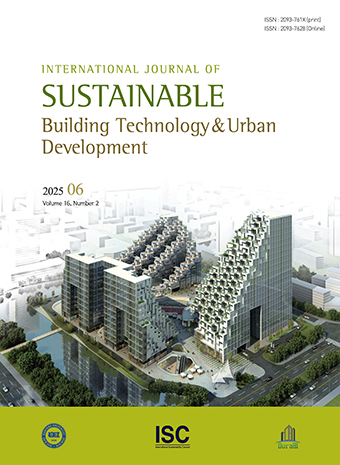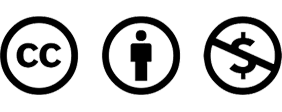General Article
S. Ponis, E. Aretoulaki, T.N. Maroutas, G. Plakas, and K. Dimogiorgi, A Systematic Literature Review on Additive Manufacturing in the context of Circular Economy. Sustainability. 13(11) (2021), 6007. DOI: https://doi.org/10.3390/su13116007.
10.3390/su13116007J. Liu and P. Wen, Metal vaporization and its influence during laser powder bed fusion process. Materials & Design. 215 (2022), 110505. DOI: https://doi.org/10.1016/j.matdes.2022.110505.
10.1016/j.matdes.2022.110505S. Yang and Y.F. Zhao, Additive manufacturing-enabled design theory and methodology: a critical review. The International Journal of Advanced Manufacturing Technology. 80(1-4) (2015), pp. 327-342. DOI: https://doi.org/10.1007/s00170-015-6994-5.
10.1007/s00170-015-6994-5F. Setaki, F. Tian, M. Turrin, M. Tenpierik, L. Nijs, and A. Van Timmeren, 3D-printed sound absorbers: compact and customisable at broadband frequencies. Architecture Structures and Construction. 3(2) (2023), pp. 205-215.
10.1007/s44150-023-00086-9N. Shahrubudin, T. Lee, and R. Ramlan, An overview on 3D printing technology: technological, materials, and applications. Procedia Manufacturing. 35 (2019), pp. 1286-1296. DOI: https://doi.org/10.1016/j.promfg.2019.06.089.
10.1016/j.promfg.2019.06.089S.M. Top and İ. Ayçam, Material used in 3-Dimensional printing technology in the construction industry. Journal of Science Part B: Art, Humanities, Design And Planning. 11(1) (2023), pp. 1-17.
European Economic and Social Committee, Additive manufacturing [Online], 2017. Available at: https://www.eesc.europa.eu/it/our-work/opinions-information-reports/opinions/additive-manufacturing [Accessed 18/09/2024].
P. Gerbert, S. Castagnino, C. Rothballer, A. Renz, and R. Filitz, Digital in Engineering and Construction: The Transformative Power of Building Information Modeling [Online], 2016. Available at: http://futureofconstruction.org. BCG The Boston Consulting Group [Accessed 14/09/2024].
F. Hamidi and F. Aslani, Additive manufacturing of cementitious composites: Materials, methods, potentials, and challenges. Construction and Building Materials. 218 (2019), pp. 582-609. DOI: https://doi.org/10.1016/j.conbuildmat.2019.05.140.
10.1016/j.conbuildmat.2019.05.140A.A. Rashid, S.A. Khan, S.G. Al-Ghamdi, and M. Koç, Additive manufacturing: Technology, applications, markets, and opportunities for the built environment. Automation in Construction. 118 (2020), 103268.
10.1016/j.autcon.2020.103268D.D. Camacho, P. Clayton, W.J. O'Brien, C. Seepersad, M. Juenger, R. Ferron, and S. Salamone, Applications of additive manufacturing in the construction industry - A forward-looking review. Automation in Construction. 89 (2018), pp. 110-119.
10.1016/j.autcon.2017.12.031T. Tabassum and A.A. Mir, A review of 3d printing technology-the future of sustainable construction. Materials Today Proceedings, 93 (2023), pp. 408-414. DOI: https://doi.org/10.1016/j.matpr.2023.08.013.
10.1016/j.matpr.2023.08.013S. El-Sayegh, L. Romdhane, and S. Manjikian, A critical review of 3D printing in construction: benefits, challenges, and risks. Archives of Civil and Mechanical Engineering. 20(2) (2020).
10.1007/s43452-020-00038-wEuropean Construction Sector Observatory, Integrating digital innovations in the construction sector: The case of 3D printing and drones in construction [Online], 2019. Available at: https://ec.europa.eu. [Accessed 14/09/2024].
M.V. Sarakinioti, M. Turrin, T. Konstantinou, M. Tenpierik, and U. Knaack, Developing an integrated 3D-printed façade with complex geometries for active temperature control. Materials Today Communications. 15 (2018), pp. 275-279. DOI: https://doi.org/10.1016/j.mtcomm.2018.02.027.
10.1016/j.mtcomm.2018.02.027C. Duty, V. Kunc, B. Compton, B. Post, D. Erdman, R.J. Smith, R. Lind, P. Lloyd, and L. Love, Structure and mechanical behavior of Big Area Additive Manufacturing (BAAM) materials. Rapid Prototyp J. 23 (2017), pp. 181-189.
10.1108/RPJ-12-2015-0183B. Khoshnevis and R. Dutton, Innovative rapid prototyping process makes large sized, smooth surfaced complex shapes in a wide variety of materials. Materials Technology. 13(2) (1998), pp. 53-56.
10.1080/10667857.1998.11752766G. De Schutter, K. Lesage, V. Mechtcherine, V.N. Nerella, G. Habert, and I. Agusti-Juan, Vision of 3D printing with concrete - Technical, economic and environmental potentials. Cement and Concrete Research. 112 (2018), pp. 25-36. DOI: https://doi.org/10.1016/j.cemconres.2018.06.001.
10.1016/j.cemconres.2018.06.001X. Peng, L. Kong, J.Y.H. Fuh, and H. Wang, A review of Post-Processing technologies in Additive Manufacturing. Journal of Manufacturing and Materials Processing. 5(2) (2021), 38. DOI: https://doi.org/10.3390/jmmp5020038.
10.3390/jmmp5020038R. Guamán-Rivera, A. Martínez-Rocamora, R. García-Alvarado, C. Muñoz-Sanguinetti, F. González-Böhme, and F. Auat-Cheein, Recent Developments and Challenges of 3D-Printed Construction: A review of research fronts. Buildings. 12(2) (2022), 229.
10.3390/buildings12020229United Nations Environment Programme, Global Status Report for Buildings and Construction: Beyond foundations. Mainstreaming sustainable solutions to cut emissions from the buildings sector [Online], 2024. Available at: https://www.unep.org/resources/report/global-status-report-buildings-and-construction [Accessed 20/09/2024].
I. Rojek, D. Mikołajewski, M. Macko, Z. Szczepański, and E. Dostatni, Optimization of Extrusion-Based 3D printing process using neural networks for sustainable development. Materials. 14(11) (2021), 2737. DOI: https://doi.org/10.3390/ma14112737.
10.3390/ma1411273734067326PMC8196833A. Baigarina, E. Shehab, and M.H. Ali, Construction 3D printing: a critical review and future research directions. Progress in Additive Manufacturing. (2023).
10.1007/s40964-023-00409-8S. Lim, R. Buswell, T. Le, S. Austin, A. Gibb, and T. Thorpe, Developments in construction-scale additive manufacturing processes. Automation in Construction. 21 (2012), pp. 262-268.
10.1016/j.autcon.2011.06.010M. Pan, T. Linner, W. Pan, H. Cheng, and T. Bock, A framework of indicators for assessing construction automation and robotics in the sustainability context. Journal of Cleaner Production. 182 (2018), pp. 82-95. DOI: https://doi.org/10.1016/j.jclepro.2018.02.053.
10.1016/j.jclepro.2018.02.053European Commission, Horizon Europe: The EU research and innovation programme (2021-2027) [Online], 2022. Available at: https://research-and-innovation.ec.europa.eu/funding/funding-opportunities/funding-programmes-and-open-calls/horizon-europe_en [Accessed 20/09/2024].
European Parliament and of the Council, Programme for the Environment and Climate Action (LIFE), and repealing Regulation (EU) No 1293/2013 (Regulation (EU) 2021/783) [Online], 2021. Available at: https://eur-lex.europa.eu/legal-content/EN/TXT/?uri=uriserv%3AOJ.L_.2021.172.01.0053.01.ENG&toc=OJ%3AL%3A2021%3A172%3ATOC [Accessed 20/09/2024].
C. Gosselin, R. Duballet, P. Roux, N. Gaudillière, J. Dirrenberger, and P. Morel, Large-scale 3D printing of ultra-high performance concrete - a new processing route for architects and builders. Materials & Design. 100 (2016), pp. 102-109. DOI: https://doi.org/10.1016/j.matdes.2016.03.097.
10.1016/j.matdes.2016.03.097A. Puzatova, P. Shakor, V. Laghi, and M. Dmitrieva, Large-Scale 3D printing for construction application by means of robotic arm and gantry 3D printer: a review. Buildings. 12(11) (2022), 2023. DOI: https://doi.org/10.3390/buildings12112023.
10.3390/buildings12112023M. Bazli, H. Ashrafi, A. Rajabipour, and C. Kutay, 3D printing for remote housing: Benefits and challenges. Automation in Construction. 148 (2023), 104772. DOI: https://doi.org/10.1016/j.autcon.2023.104772.
10.1016/j.autcon.2023.104772M.R. Khosravani and A. Haghighi, Large-Scale Automated Additive Construction: overview, robotic solutions, sustainability, and future prospect. Sustainability. 14(15) (2022), 9782. DOI: https://doi.org/10.3390/su14159782.
10.3390/su14159782A. Chiusoli, TECLA | Un habitat eco-sostenibile stampato in 3D. Stampanti 3D | WASP [Online], 2024. Available at: https://www.3dwasp.com/casa-stampata-in-3d-tecla/ [Accessed 10/09/2024].
X. Zhang, M. Li, J.H. Lim, Y. Weng, Y.W.D. Tay, H. Pham, and Q. Pham, Large-scale 3D printing by a team of mobile robots. Automation in Construction. 95 (2018), pp. 98-106.
10.1016/j.autcon.2018.08.004H. Strauß and U. Knaack, Additive Manufacturing for Future Facades: The potential of 3D printed parts for the building envelope. Journal of Facade Design and Engineering. 3(3-4) (2016), pp. 225-235. DOI: https://doi.org/10.3233/fde-150042.
10.3233/FDE-150042Ellen Mcarthur foundation, The technical cycle of the butterfly diagram. Ellen Mcarthur Foundation [Online], 2022. Available at: https://www.ellenmacarthurfoundation.org/articles/the-technical-cycle-of-the-butterfly-diagram [Accessed 18/11/2024].
Studio RAP, Studio RAP 3D prints ceramic tiles to resemble red bricks for Amsterdam boutique facade. Designboom [Online], 2022. Available at: https://www.designboom.com/architecture/studio-rap-3d-print-ceramic-tiles-red-bricks-amsterdam-boutique-facade-01-28-2022/ [Accessed 24/09/2024].
A. Malagò, L'approccio algoritmico alla progettazione dell'involucro e la stampa 3D. Costruire in Laterizio. 194 (2024), pp. 80-89.
P. Pintos, Ceramic House / Studio RAP. ArchDaily [Online], 2024. Available at: https://www.archdaily.com/1010548/ceramic-house-studio-rap [Accessed 24/09/2024].
T. Ravenscroft, New Delft Blue archways wrapped in 3,000 unique 3D-printed ceramics tiles. Dezeen [Online], 2023. Available at: https://www.dezeen.com/2023/06/29/new-delft-blue-3d-printed-ceramic-archway-studio-rap/ [Accessed 25/09/2024].
Severi, Silicone 3D printing with a multi-nozzle extrusion system. WASP [Online], 2024. Available at: https://www.3dwasp.com/en/silicone-3d-printing-with-a-multi-nozzle-extrusion-system/ [Accessed 24/09/2024].
3D WASP, 3D printed inflatable auxetic tiles in silicone for light regulation [Video]. YouTube [Online], 2024. Available at: https://www.youtube.com/watch?v=LeRs6JZJBkc [Accessed 30/09/2024].
J. Wassink, Sponge wall saves energy. Delft Integraal [Online], 2021. Available at: https://www.tudelft.nl/en/delft-integraal/articles/okt-2021-naar-de-natuur/sponge-wall-saves-energy [Accessed 24/09/2024].
4TU.Bouw, SPONG3D [Online], 2021. Available at: https://www.4tu.nl/bouw/Projects/SPONG3D/ [Accessed 24/09/2024].
M. Turrin, P. De Ruiter, and M. Tenpierik, Additive manufacturing for integral design & engineering. In BE-AM | Built Environment Additive Manufacturing: BE-AM 2021 Symposium and Exhibition (pp. 105-119). TU Darmstadt [Online], 2021. Available at: https://be-am.de/wp-content/uploads/2024/11/BE-AM_Booklet_2021.pdf [Accessed 24/09/2024].
F. Setaki, M. Tenpierik, M. Turrin, and A. Van Timmeren, Acoustic absorbers by additive manufacturing. Building and Environment. 72 (2013), pp. 188-200. DOI: https://doi.org/10.1016/j.buildenv.2013.10.010.
10.1016/j.buildenv.2013.10.010J.R. Moreno, Arachne 3D printed facade. IAAC Blog [Online], 2020. Available at: https://www.iaacblog.com/programs/arachne-3d-printed-facade [Accessed 24/09/2024].
Parametric House, Arachne [Online], 2024. Available at: https://parametrichouse.com/arachne/ [Accessed 24/09/2024].
Archi Solutions, Arachne [Online], 2018. Available at: https://www.archi-solutions.com/2017-2arachne/ [Accessed 24/09/2024].
3Dnatives, The world's largest 3D printed pavilion is in Nanjing, China [Online], 2021. Available at: https://www.3dnatives.com/en/the-worlds-largest-3d-printed-pavilion-is-in-nanjing-china-070720215/ [Accessed 15/11/2024].
ArchDaily, Beyond the Geometry: The World's Largest Modified Plastic 3D Printing Architecture / Archi-Union Architects + Fab-Union [Online], 2021. Available at: https://www.archdaily.com/960939/beyond-the-geometry-the-worlds-largest-modified-plastic-3d-printing-architecture-archi-union-architects [Accessed 15/11/2024].
P.F. Yuan, H.S. Beh, X. Yang, L. Zhang, and T. Gao, Feasibility study of large-scale mass customization 3D printing framework system with a case study on Nanjing Happy Valley East Gate. Frontiers of Architectural Research. 11(4) (2022), pp. 670-680. DOI: https://doi.org/10.1016/j.foar.2022.05.005.
10.1016/j.foar.2022.05.005Archidust, Design research into the possibilities of 3D concrete printed facades by Neutelings Riedijk Architects in collaboration with TU Eindhoven and Vertico [Online], 2023. Available at: https://www.archidust.com/blog/2023/12/14/design-research-into-the-possibilities-of-3d-concrete-printed-facades-by-neutelings-riedijk-architects-in-collaboration-with-tueindhoven-and-vertico/ [Accessed 15/11/2024].
I.C. Nan and A. Vigorito, Exploring 3D concrete printing of lattice structures on robotically-shaped sand formwork for circular futures. In G. Di Marco, D. Lombardi, & M. Tedjosaputro (Eds.), Creativity in the Age of Digital Reproduction: xArch 2023 (pp. 128-135). (Lecture Notes in Civil Engineering; Vol. 343). Springer. (2024).
10.1007/978-981-97-0621-1_16Neutelings Riedijk Architects, Design research into the possibilities of 3D concrete printed facades. Retrieved [Online], 2023. Available at: https://neutelings-riedijk.com/news/design-research-into-the-possibilities-of-3d-concrete-printed-facades/ [Accessed 15/11/2024].
Vertico, Sand mould facades [Online], 2023. Available at: https://www.vertico.com/projects/sand-mould-facades [Accessed 15/11/2024].
M. Teeling, M. Turrin, and P. de Ruiter, PULSE: Integrated parametric modeling for a shading system: From daylight optimization to additive manufacturing. In M. Turrin, B. Peters, W. O'Brien, R. Stouffs, & T. Dogan (Eds.), Proceedings of the Symposium on Simulation for Architecture and Urban Design 2017: SimAUD 2017 (pp. 85-92). (2017). Simulation Councils.
J. Duro-Royo, J.V. Zak, A. Ling, Y.-J. Tai, N. Hogan, B. Darweesh, and N. Oxman, Designing a tree: Fabrication-informed digital design and fabrication of hierarchical structures. Proceedings of IASS Annual Symposia, IASS 2018 Boston Symposium: Construction-aware structural design, 1-7 (2018). International Association for Shell and Spatial Structures (IASS).
N.A. Lee, R.E. Weber, J.H. Kennedy, J.J. Van Zak, J. Duro-Royo, and N. Oxman, Multi-material printing of multi lengthscale bio-composite membranes. In C. Lázaro, K.-U. Bletzinger, & E. Oñate (Eds.), Proceedings of the IASS Annual Symposium 2019 - Structural Membranes 2019: Form and Force (pp. 1-8). International Association for Shell and Spatial Structures (IASS). (2019).
N.A. Lee, R.E. Weber, J.H. Kennedy, J.J. Van Zak, M. Smith, J. Duro-Royo, and N. Oxman, Sequential multi-material additive manufacturing of functionally graded biopolymer composites. 3D Printing and Additive Manufacturing. 7(5) (2020), pp. 205-215. DOI: https://doi.org/10.1089/3dp.2020.0171.
10.1089/3dp.2020.017136654920PMC9586237L. Mogas-Soldevila, J. Duro-Royo, and N. Oxman, FORM FOLLOWS FLOW: A material- driven computational workflow for digital fabrication of large-scale hierarchically structured objects. In ACADIA 2015: Computational Ecologies: Design in the Anthropocene. Proceedings of the 35th Annual Conference of the Association for Computer Aided Design in Architecture (pp. 185-193). Cincinnati, OH: ACADIA. (2015).
N. Oxman, C. Ortiz, F. Gramazio, and M. Kohler, Material ecology. Computer-Aided Design. 60(1) (2015), pp. 1-2. DOI: https://doi.org/10.1016/j.cad.2014.10.002.
10.1016/j.cad.2014.10.002N. Oxman, Aguahoja I. OXMAN [Online], 2020. Available at: https://oxman.com/projects/aguahoja [Accessed 15/11/2024].
S. Barnes, L. Kirssin, E. Needham, E. Baharlou, D.E. Carr, and J. Ma, 3D printing of ecologically active soil structures. Additive Manufacturing. 52 (2022), 102670. DOI: https://doi.org/10.1016/j.addma.2022.102670.
10.1016/j.addma.2022.102670DeZeen, University of Virginia's 3D-printed soil seed walls. Dezeen [Online], 2022. Available at: https://www.dezeen.com/2022/09/05/university-of-virginia-3d-printed-soil-seed-walls/ [Accessed 15/11/2024].
S. Mitra, 3D printed living soil walls by University of Virginia can grow plants. Yanko Design [Online], 2022. Available at: https://www.yankodesign.com/2022/09/05/3d-printed-living-soil-walls-by-university-of-virginia-can-grow-plants/ [Accessed 15/11/2024].
IOUS Studio, Bioreceptive wall [Online], 2023. Available at: https://www.ious-studio.com/architecture/bioreceptive-wall [Accessed 15/11/2024].
C. Rotondi, C. Gironi, D. Ciufo, M. Diana, and S. Lucibello, Bioreceptive Ceramic Surfaces: Material experimentations for responsible research and design innovation in circular economy transition and "Ecological Augmentation." Sustainability. 16(8) (2024), 3208. DOI: https://doi.org/10.3390/su16083208.
10.3390/su16083208J.A. Lee, J.Y. Kim, J.H. Ahn, Y. Ahn, and S.Y. Lee, Current advancements in the bio-based production of polyamides. Trends in Chemistry. 5(12) (2023), pp. 873-891. https://doi.org/10.1016/j.trechm.2023.10.001.
10.1016/j.trechm.2023.10.001Gramazio Kohler Research, Acoustic Diffusor Panels, Immersive Design Lab, ETH Zurich [Online], 2021. Available at: https://gramaziokohler.arch.ethz.ch/web/e/projekte/429.html [Accessed 25/09/2024].
Gramazio Kohler Research, Immersive Design Lab, ETH Zurich, 2020-2021 [Online], 2021. Available at: https://gramaziokohler.arch.ethz.ch/web/e/projekte/417.html [Accessed 07/10/2024].
D. Guerra, 3D-printed panels by Gramazio Kohler Research merging acoustics with aesthetics. Parametric Architecture [Online], 2023. Available at: https://parametric-architecture.com/3d-printed-panels-by-gramazio-kohler-research-merging-acoustics-with-aesthetics/ [Accessed 07/10/2024].
M. Turrin, Integrated performance by additive manufacturing [Video]. BE-AM | Built Environment - Additive Manufacturing. TU-Delft [Online], 2021. Available at: https://www.youtube.com/watch?v=W_jN8pcPa1U [Accessed 24/09/2024].
D. McClements, SLA vs. FDM: Differences and Comparison. Xometry [Online], 2024. Available at: https://www.xometry.com/resources/3d-printing/sla-vs-fdm-3d-printing/ [Accessed 24/09/2024].
D. McClements and G. Paulsen, SLS vs. FDM: Differences and Comparisons. Xometry [Online], 2024. Available at: https://www.xometry.com/resources/3d-printing/sls-vs-fdm-3d-printing/ [Accessed 24/09/2024].
CORDIS, European Commission, Fact-or-Myth: Bio-based, organic, biodegradable [Online], 2019. Available at: https://cordis.europa.eu/article/id/125396-factormyth-biobased-organic-biodegradable [Accessed 25/09/2024].
C.G. Manning, Technology readiness levels - NASA. NASA [Online], 2023. Available at: https://www.nasa.gov/directorates/somd/space-communications-navigation-program/technology-readiness-levels/ [Accessed 18/11/2024].
NASA ESTO, Technology readiness levels - NASA Earth Science and Technology Office [Online], 2020. Available at: https://esto.nasa.gov/trl/ [Accessed 18/11/2024].
C. Strazza, N. Olivieri, A. De Rose, T. Stevens, L. Peeters, D. Tawil-Jamault, and M. Buna, European Commission: Directorate-General for Research and Innovation, Technology readiness level: guidance principles for renewable energy technologies: final report, (2017). Publications Office. DOI: https://data.europa.eu/doi/10.2777/577767.
L. Aelenei, D. Aelenei, R. Romano, E. Sergio, M. Marcin, B. Jose, and M. Rico-Martinez, Case Studies-Adaptive Facade Network. 2018.
R. Romano, L. Aelenei, D. Aelenei, and E.S. Mazzucchelli, What is an adaptive façade? Analysis of Recent Terms and definitions from an international perspective. DOAJ (DOAJ: Directory of Open Access Journals). 6(3) (2018), pp. 65-76. DOI: https://doi.org/10.7480/jfde.2018.3.2478.
R.G. Aragonés and F. Olivieri, Eco Architecture: Innovative Façade Design with Vegetal Elements: Opaque and Translucent Green Wall Constructive Solutions. Design Principles & Practice: An International Journal. 4(2) (2010), pp. 103-122.
10.18848/1833-1874/CGP/v04i02/37847P. Gallo, R. Romano, and E. Belardi, Smart Green Prefabrication: Sustainability Performances of Industrialized Building Technologies. Sustainability. 13(9) (2021), 4701. DOI: https://doi.org/10.3390/SU13094701.
10.3390/su13094701J. Torres, R. Garay-Martinez, X. Oregi, J.I. Torrens-Galdiz, A. Uriarte-Arrien, A. Pracucci, O. Casadei, S. Magnani, N. Arroyo, and A.M. Cea, Plug and play modular façade construction system for renovation for residential buildings. Buildings. 11(9) (2021), 419. DOI: https://doi.org/10.3390/buildings11090419.
10.3390/buildings11090419N. Keena, M. Raugei, M. Lokko, M.A. Etman, V. Achnani, B.K. Reck, and A. Dyson, A Life-Cycle Approach to Investigate the Potential of Novel Biobased Construction Materials toward a Circular Built Environment. Energies. 15(19) (2022), 7239. DOI: https://doi.org/10.3390/en15197239.
10.3390/en15197239M.N. Andanje, J.W. Mwangi, B.R. Mose, and S. Carrara, Biocompatible and Biodegradable 3D Printing from Bioplastics: A Review. Polymers. 15(10) (2023), 2355. DOI: https://doi.org/10.3390/polym15102355.
10.3390/polym1510235537242930PMC10221408A. Wiberg, J. Persson, and J. Ölvander, Design for additive manufacturing - a review of available design methods and software. Rapid Prototyping Journal. 25(6) (2019), pp. 1080-1094. DOI: https://doi.org/10.1108/rpj-10-2018-0262.
10.1108/RPJ-10-2018-0262R. Ranjan, D. Kumar, M. Kundu, and S.C. Moi, A critical review on Classification of materials used in 3D printing process. Materials Today Proceedings. 61 (2022), pp. 43-49. DOI: https://doi.org/10.1016/j.matpr.2022.03.308.
10.1016/j.matpr.2022.03.308J. O'Connell, Cartesian 3D printer vs. delta vs. SCARA vs. belt vs. CoreXY vs. polar: Which 3D printer is best for you? All3DP [Online], 2023. Available at: https://all3dp.com/2/cartesian-3d-printer-delta-scara-belt-corexy-polar/ [Accessed 19/11/2024].
Manufactur3D, What Are The Four Types Of FDM 3D Printers? Cartesian, Delta, Polar & Scara | Manufactur3D. Manufactur3D Magazine [Online], 2020. Available at: https://manufactur3dmag.com/understanding-the-four-types-of-fdm-3d-printers-cartesian-delta-polar-scara/ [Accessed 19/11/2024].
C. Schwaar, The complete guide to SLS 3D printing. All3DP [Online], 2024. Available at: https://all3dp.com/1/sls-3d-printing-the-ultimate-guide/ [Accessed 19/11/2024].
C. Bănică, A. Sover, and D. Anghel, Printing the Future Layer by Layer: A Comprehensive exploration of additive manufacturing in the era of Industry 4.0. Applied Sciences. 14(21) (2024), 9919. DOI: https://doi.org/10.3390/app14219919.
10.3390/app14219919S.F. Iftekar, A. Aabid, A. Amir, and M. Baig, Advancements and Limitations in 3D Printing Materials and Technologies: A Critical review. Polymers. 15(11) (2023), 2519. DOI: https://doi.org/10.3390/polym15112519.
10.3390/polym1511251937299318PMC10255598UNI EN 13830, Curtain walling - Product standard. Structural integrity and safety guidelines. Milan, Italy: Ente Nazionale Italiano di Unificazione (UNI). 2020.
International Organization for Standardization, ISO 14040: Environmental management - Life cycle assessment - Principles and framework. Geneva, Switzerland: ISO. 2006.
K. Chadha, A. Dubor, E. Cabay, Y. Tayoun, L. Naldoni, and M. Moretti, Additive Manufacturing for the Circular Built Environment: Towards Circular Construction with Earth-Based Materials. In Springer eBooks (pp. 111-128). (2024). DOI: https://doi.org/10.1007/978-3-031-39675-5_7.
10.1007/978-3-031-39675-5_7C. Zhu, T. Li, M.M. Mohideen, P. Hu, R. Gupta, S. Ramakrishna, and Y. Liu, Realization of Circular Economy of 3D Printed Plastics: a review. Polymers. 13(5) (2021), 744. DOI: https://doi.org/10.3390/polym13050744.
10.3390/polym1305074433673625PMC7957743M. Fonseca and A.M. Matos, 3D Construction Printing Standing for Sustainability and Circularity: Material-Level Opportunities. Materials. 16(6) (2023), 2458. DOI: https://doi.org/10.3390/ma16062458.
10.3390/ma1606245836984341PMC10051644A. Almusaed, I. Yitmen, J.A. Myhren, and A. Almssad, Assessing the impact of recycled building materials on environmental sustainability and energy efficiency: A comprehensive framework for reducing greenhouse gas emissions. Buildings. 14(6) (2024), 1566. DOI: https://doi.org/10.3390/buildings14061566.
10.3390/buildings14061566R. Minunno, T. O'Grady, G. Morrison, R. Gruner, and M. Colling, Strategies for applying the circular economy to prefabricated buildings. Buildings. 8(9) (2018), 125. DOI: https://doi.org/10.3390/buildings8090125.
10.3390/buildings8090125R. Pagani, G. Chiesa, and J. Tulliani, Biomimetica e Architettura. Come la natura domina la tecnologia. FrancoAngeli. 2016.
E. Mazzucchelli, S. Gosztonyi, R. Romano, N. Nestle, B. Marcin, and C. Menezo, Future Developments - Innovation for the next generation of adaptive building envelopes. 2018, TU Delft Open for the COST Action 1403 Adaptive Facade Network. ISBN 978-94-6366-110-2. Available at: https://tu1403.eu/wp-content/uploads/Vol-3-1_for-web-Open-Access-9789463661102.pdf
N.L. Montàs and N. Chayaamor-Heil, Biomimetic for building skin : living envelope for contemporary architecture. In 'THE POWER OF SKIN' New Materiality in Contemporary Architectural Design. Arcadia Mediática [Online], 2018. Available at: https://hal.science/hal-02890834v1 [Accessed 22/11/2024].
M.D.L.Á. Ortega Del Rosario, K. Beermann, and M. Chen Austin, Environmentally Responsive Materials for Building Envelopes: A Review on Manufacturing and Biomimicry-Based Approaches. Biomimetics. 8(1) (2023), 52. DOI: https://doi.org/10.3390/biomimetics8010052.
10.3390/biomimetics801005236810383PMC9944834D. Krug and J. Miles, Off-Site Construction: Sustainability Characteristics [Online], 2013. Available at: https://www.buildoffsite.com/content/uploads/2015/03/BoS_offsiteconstruction_1307091.pdf [Accessed 22/11/2024].
T.D. Oesterreich and F. Teuteberg, Understanding the implications of digitisation and automation in the context of Industry 4.0: A triangulation approach and elements of a research agenda for the construction industry. Computers in Industry. 83 (2016), pp. 121-139. DOI: https://doi.org/10.1016/j.compind.2016.09.006.
10.1016/j.compind.2016.09.006Y. Jiang, D. Zhao, D. Wang, and Y. Xing, Sustainable Performance of Buildings through Modular Prefabrication in the Construction Phase: A Comparative Study. Sustainability. 11(20) (2019), 5658. https://doi.org/10.3390/su11205658.
10.3390/su11205658M. Bekaert, K. Van Tittelboom, and G. De Schutter, (2023). The effect of curing conditions on the service life of 3D printed concrete formwork. Materials. 16 (21)(2019), 6972. DOI: https://doi.org/10.3390/ma16216972.
10.3390/ma1621697237959569PMC10647294D. Kajzr, T. Myslivec, and J. Černohorský, Modelling, analysis and comparison of robot energy consumption for Three-Dimensional Concrete Printing Technology. Robotics. 13(5) (2024), 78. DOI: https://doi.org/10.3390/robotics13050078.
10.3390/robotics13050078G. May and F. Psarommatis, Maximizing energy efficiency in Additive Manufacturing: A review and Framework for Future research. Energies. 16(10) (2023), 4179. DOI: https://doi.org/10.3390/en16104179.
10.3390/en16104179A. Selvam, S. Mayilswamy, R. Whenish, K. Naresh, V. Shanmugam, and O. Das, Multi-objective optimization and prediction of surface roughness and printing time in FFF printed ABS polymer. Scientific Reports. 12(1) (2022). DOI: https://doi.org/10.1038/s41598-022-20782-8.
10.1038/s41598-022-20782-836207348PMC9546872R. Chýlek, L. Kudela, J. Pospíšil, and L. Šnajdárek, Parameters Influencing the Emission of Ultrafine Particles during 3D Printing. International Journal of Environmental Research and Public Health. 18(21) (2021), 11670. DOI: https://doi.org/10.3390/ijerph182111670.
10.3390/ijerph18211167034770184PMC8582798H. Garcia-Gonzalez, T. Lopez-Pola, P. Fernandez-Rubio, and P. Fernandez-Rodriguez, Analysis of volatile organic compound emissions in 3D printing: Implications for indoor air quality. Buildings. 14(11) (2024), 3343. DOI: https://doi.org/10.3390/buildings14113343.
10.3390/buildings14113343K. Ejsmont, B. Gladysz, and A. Kluczek, Impact of Industry 4.0 on Sustainability-Bibliometric Literature Review. Sustainability. 12(14) (2020), 5650. DOI: https://doi.org/10.3390/su12145650.
10.3390/su12145650Y.-J.T. Tai, C. Bader, A.S. Ling, J. Disset, B. Darweesh, J. Duro-Royo, J. Van Zak, N. Hogan, and N. Oxman, Designing (for) decay: Parametric material distribution for hierarchical dissociation of water-based biopolymer composites. In C. Mueller & S. Adriaenssens (Eds.), Proceedings of the IASS Symposium 2018: Creativity in Structural Design (pp. 1-8). International Association for Shell and Spatial Structures (IASS). (2018).
J.A. Madrid, G.S. Ortega, J.G. Carabaño, N.O.E. Olsson, and J.A.T. Ríos, (2023). 3D claying: 3D printing and recycling clay. Crystals. 13(3) (2018), 375. DOI: https://doi.org/10.3390/cryst13030375.
10.3390/cryst13030375H. Mangold and B. Von Vacano, The frontier of Plastics recycling: Rethinking waste as a resource for High‐Value applications. Macromolecular Chemistry and Physics. 223(13) (2022). DOI: https://doi.org/10.1002/macp.202100488.
10.1002/macp.202100488J. Machotová, M. Pagáč, R. Svoboda, J. Jansa, Š. Podzimek, E. Černošková, J. Palarčík, Z. Koutová, P. Kutálek, and L. Zárybnická, Effect of PA12 powder recycling on properties of SLS 3D printed parts, including their hygroscopicity. European Polymer Journal. 220 (2024), 113432. DOI: https://doi.org/10.1016/j.eurpolymj.2024.113432.
10.1016/j.eurpolymj.2024.113432R.C.G.M. Loonen, J.M. Rico-Martinez, F. Favoino, M. Brzezicki, C. Menezo, G. La Ferla, and L. Aelenei, Design for façade adaptability - Towards a unified and systematic characterization. Proceedings of the 10th Conference on Advanced Building Skins, Bern, Switzerland, (2015). pp. 1284-1294.
R. Pfaendner, Restabilization - 30 years of research for quality improvement of recycled plastics review. Polymer Degradation and Stability. 203 (2022), 110082. DOI: https://doi.org/10.1016/j.polymdegradstab.2022.110082.
10.1016/j.polymdegradstab.2022.110082- Publisher :Sustainable Building Research Center (ERC) Innovative Durable Building and Infrastructure Research Center
- Publisher(Ko) :건설구조물 내구성혁신 연구센터
- Journal Title :International Journal of Sustainable Building Technology and Urban Development
- Volume : 16
- No :1
- Pages :111-140
- Received Date : 2025-03-01
- Accepted Date : 2025-03-17
- DOI :https://doi.org/10.22712/susb.20250008




 International Journal of Sustainable Building Technology and Urban Development
International Journal of Sustainable Building Technology and Urban Development










